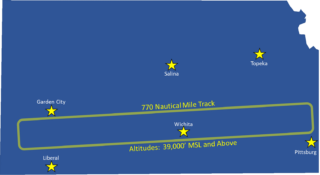HOME | ABOUT US | MEDIA KIT | CONTACT US | INQUIRE
HOME | ABOUT US | MEDIA KIT | CONTACT US | INQUIRE
The FAA has signed a deal with Kansas regarding a supersonic flight corridor.

Image courtesy Kansas Office of the Governor
Governor Laura Kelly says she and Kansas Department of Transportation Secretary Julie Lorenz announced on Thursday that KDOT and the Federal Aviation Administration have finalized an agreement establishing the Kansas Supersonic Transportation Corridor to test non-military aircraft that can fly faster than the speed of sound, or Mach speed.
“To be able to deliver this new opportunity for our country is yet another example of Kansas cementing its reputation as a national leader in the aviation industry,” Governor Kelly said. “This high-altitude flight corridor gives Kansas a strategic advantage in attracting companies involved in the development of supersonic aircraft, and will play a significant role in our state’s ability to encourage economic development as we recover from the COVID-19 pandemic.”
Gov. Kelly said KDOT Secretary Lorenz, who chairs the Aviation Committee for the American Association of State Highway and Transportation Officials, commended the joint efforts that have resulted in Kansas securing the SSTC. She said Lorenz acknowledged Kansas Senator Jerry Moran’s involvement in the process coordinating with the FAA, NASA, the Air Route Traffic Control Center and the National Institute of Aviation Research at Wichita State University.
Gov. Kelly said the Kansas SSTC is a 770-nautical-mile racetrack-shaped corridor at or above an altitude of 39,000 feet. She said the FAA’s Kansas City Air Route Traffic Control Center looked at and tested this route to protect the safety and efficiency of the National Airspace system. She said this corridor is entirely in federal airspace above the state of Kansas and runs the length of the state, just north of the Kansas-Oklahoma border. She said the route will support sustained flight up to Mach 3 and is within reach of various airports that are equipped to provide fuel, ground and technical support.